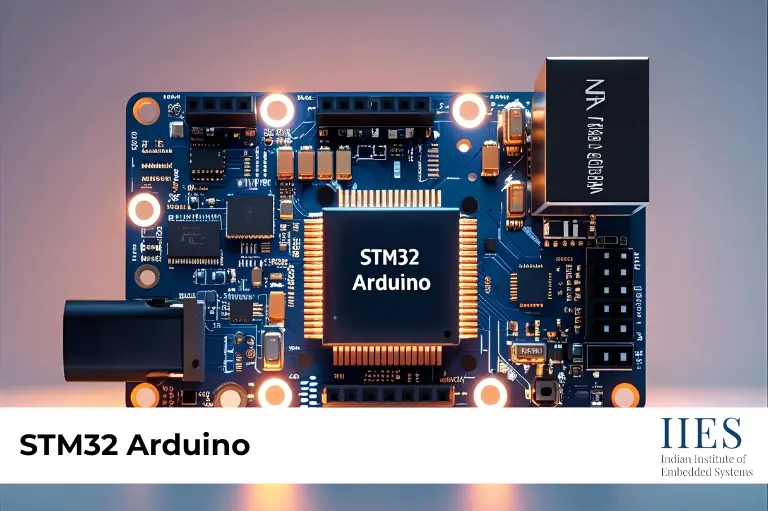
Embedded development is shaping the future of IoT, robotics, and industrial automation. Among the most powerful tools available today, STM32 Arduino stands out as a bridge between beginner-friendly prototyping and professional-grade embedded solutions.
STM32 Arduino combines the simplicity of Arduino with the high performance of STM32 microcontrollers. It’s ideal for beginners upgrading their skills and professionals building advanced embedded or IoT projects.
STM32 is a family of ARM Cortex-M based microcontrollers created by STMicroelectronics. These chips are known for speed, power efficiency, and scalability. They are widely used in industries ranging from consumer electronics to medical devices and automotive systems.
Note: Developers often use stm32 arduino ide for seamless code integration and testing.
Arduino is often the go-to platform for beginners. However, when projects demand higher reliability, faster performance, or industrial use, STM32 Arduino becomes the preferred choice.
In short, Arduino is perfect for learning and prototyping, but stm32f103c8t6 arduino delivers when scaling into professional applications.
For students or hobbyists, Arduino offers a gentle introduction to embedded systems. Its intuitive IDE, drag-and-drop libraries, and vast tutorials make it beginner-friendly.
But once learners master the basics, they often face Arduino’s limitations—slower processing, limited memory, and fewer options for scaling. That’s where stm32 arduino programming acts as the perfect upgrade path.
An embedded system is a combination of hardware and software designed to perform dedicated tasks. STM32 Arduino align perfectly with this definition.
Reliability is enhanced when using tools like stm32 arduino board manager for managing multiple boards efficiently.
Reliability is crucial for applications like healthcare devices, automotive electronics, or defense systems. While Arduino boards are simple and affordable, STM32 provides professional-grade robustness.
For mission-critical projects, STM32 is the safer and more dependable option.
The choice depends on your learning stage and project goals.
This natural progression allows learners to build strong foundations and then move toward advanced embedded development without starting over.
The exciting part is that you don’t need to abandon Arduino entirely. By integrating stm32 arduino ide into the Arduino IDE, you can enjoy both worlds.
This hybrid setup lets you tap into Arduino’s simplicity while leveraging stm32 arduino programming power.
Here’s a quick side-by-side comparison for clarity:
| Feature | Arduino | STM32 Arduino |
|---|---|---|
| Performance | Basic, slower | High-speed ARM cores |
| Memory | Limited | Large flash & RAM |
| Scalability | Few models | Wide range of MCUs |
| Peripherals | Basic support | Advanced, industry-grade |
| Reliability | Good for hobby | Excellent for critical systems |
| Community | Larger | Growing fast |
Apart from STM32, a few other microcontrollers often outperform Arduino in advanced scenarios:
Your choice should depend on your project’s needs: connectivity, power, cost, or robustness.
As embedded systems continue to drive IoT, AIoT, robotics, and automation, STM32 Arduino is positioned as a key enabler. Developers benefit from:
For students, hobbyists, and professionals alike, STM32 Arduino represents not just a tool but a gateway to future-ready innovation.

The future of embedded development requires platforms that combine easy learning with professional-grade performance. Arduino helps beginners start strong, while STM32 Arduino enables scalable, reliable, and industry-ready systems—bridging classroom learning with real-world IoT and embedded innovation.
STM32 Arduino combines STM32 microcontrollers with Arduino IDE, offering speed, reliability, and scalability for embedded and IoT projects.
STM32 boards offer higher processing power, larger memory, real-time capabilities, and advanced peripheral support compared to standard Arduino boards.
Yes, STM32 can be integrated into Arduino IDE using the STM32 Board Manager, allowing users to program with familiar Arduino syntax.
Install Arduino IDE, add STM32 Board Manager URL, install STM32 BSP, select your board, and write/upload code using Arduino syntax.
STM32 offers high-speed processing, real-time control, energy efficiency, and industrial-grade reliability for mission-critical applications.
Absolutely. Arduino is great for learning, and transitioning to STM32 provides better performance and scalability for advanced projects.
Indian Institute of Embedded Systems – IIES